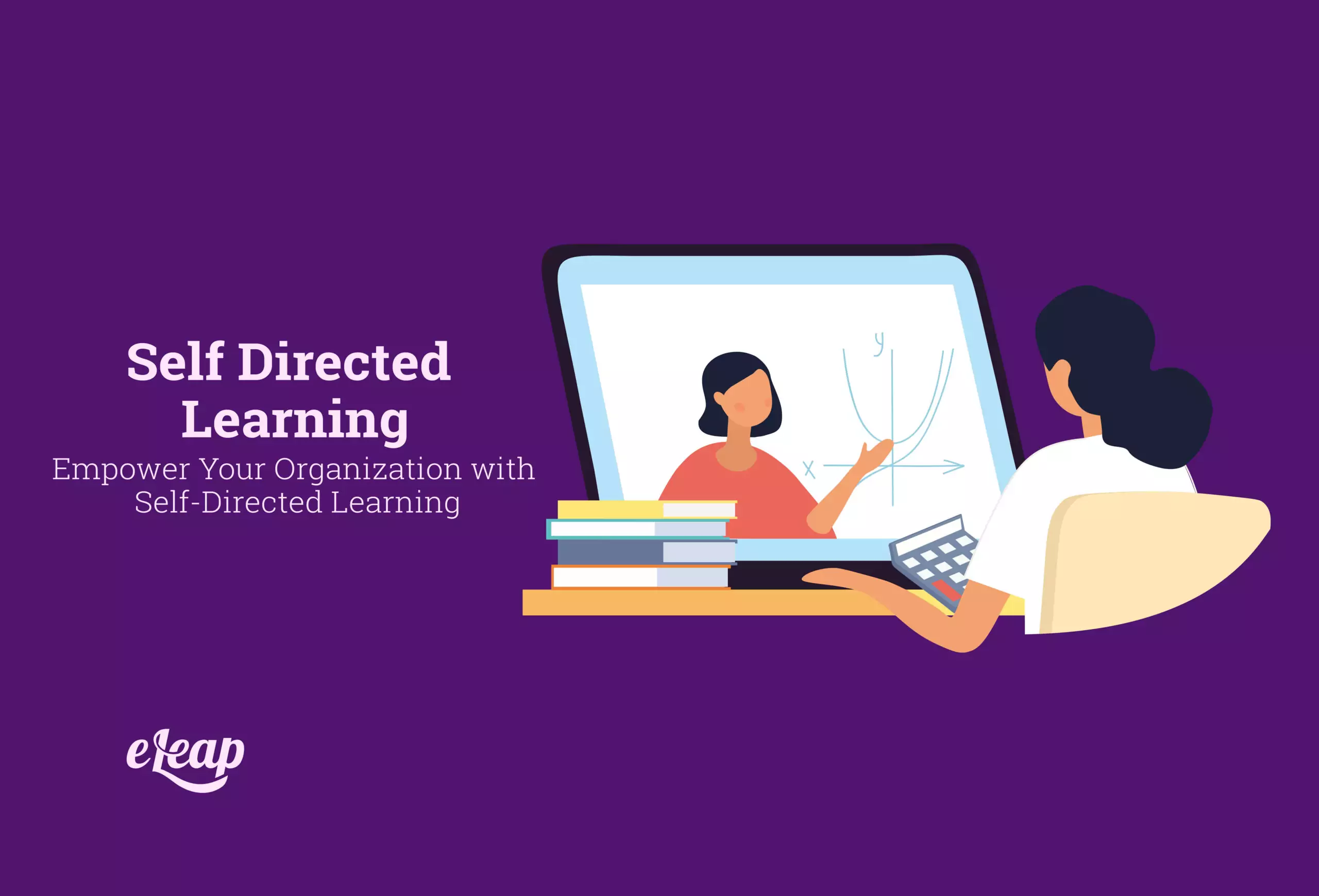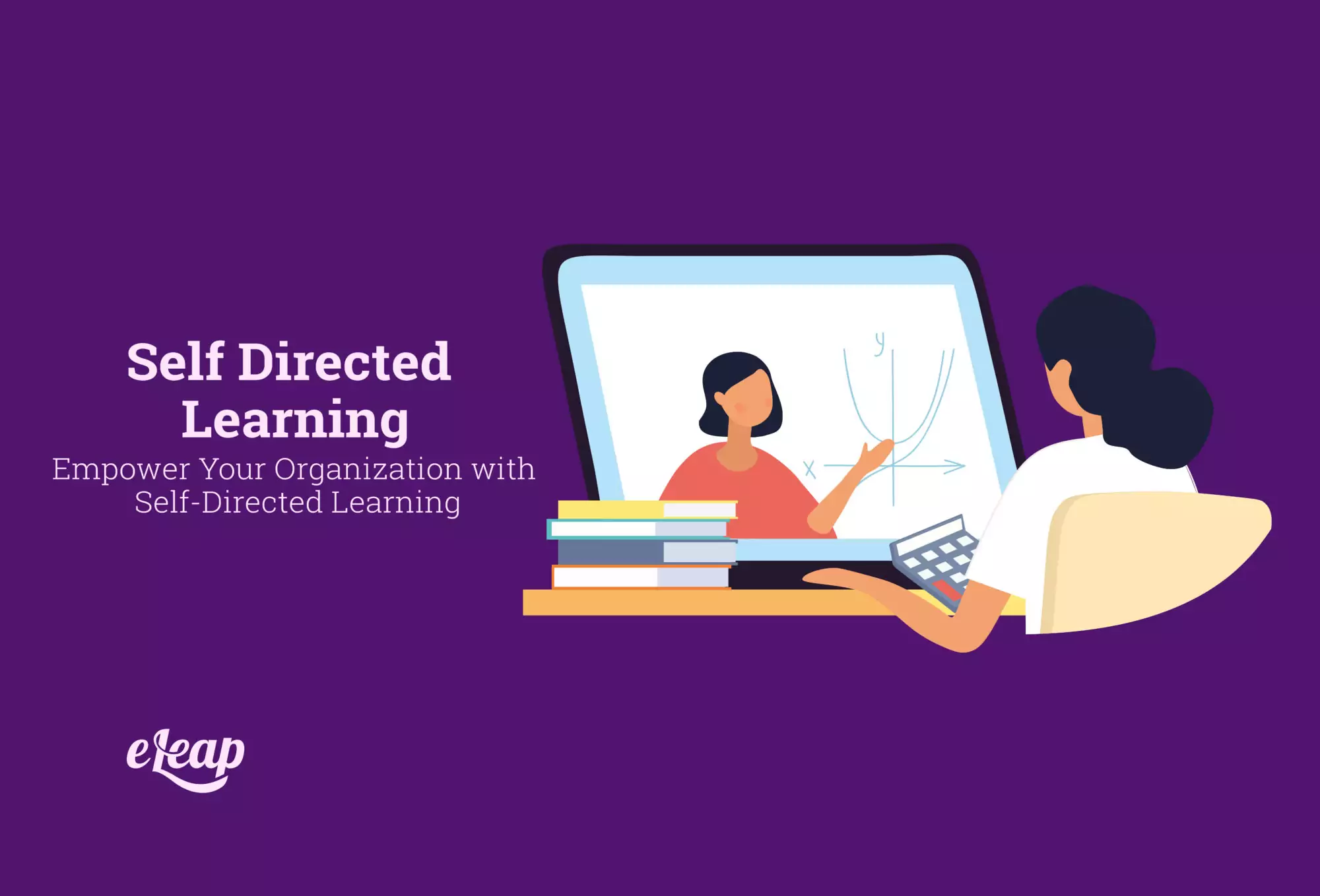Self Directed Learning
Empower Your Organization with Self-Directed Learning

There are many ways to train teams of employees, and not every method is created equal. While some people can thrive in a traditional training classroom, many don’t learn best this way. Self-directed learning can be an excellent solution to how to invest in workplace education that thinks outside the box.
The modern workforce is made up of people who come from all educational backgrounds. But as we age, it is often the case that we all become self-led learners. You can leverage this fact and use it to empower your entire organization. You can reduce your costs and decrease frustration among your team by allowing them to learn in the best way for them.

What Self-Directed Learning Is Not
Many leaders have concerns that self-directed learning won’t lead to the results they want. After all, if you aren’t controlling the curriculum, the projects, and the assessment process, how can you be sure your team is learning the correct information? But these questions stem from misconceptions about self-directed learning.
Self-directed learning does not mean that your employees are handed free range to an Internet search engine and told to figure it out for themselves. That wouldn’t serve anyone. Instead, there is usually a pre-training process, where the goals and methods of the training are discussed.
The word “self” doesn’t mean that this type of training is done entirely alone, either. Team members can work together in groups to share what they are learning and help each other. This can be done totally in a group format or with regular group meetings to discuss what is being learned individually.
Self-directed learning can also involve the presence of mentors or instructors. In this case, instead of offering lectures or pre-planned activities, the experts will act as guides while the trainees actively engage in the learning.
Benefits of Self-Directed Learning for Your Organization
There are many excellent reasons to consider this type of training for your office. The first benefit is that it allows your team to learn in the best ways for them. But here are some other reasons to consider self-directed learning:
- It is better for accommodating a diverse workforce. Anyone, regardless of their educational background or socioeconomic group, can engage in self-directed learning. This is an excellent tool for offering equal access to training.
- It can be used for a broader range of topics. This type of learning is excellent for professional skills, soft skills, interpersonal skills, and more.
- It doesn’t require formal classroom time. So much of this type of learning can be done “on the job” or “in the moment”. In many cases, it’s an experienced-based type of learning, which means less time is spent away from work tasks.
- It encourages a deeper understanding of specialized topics. Because employees direct their own learning, they aren’t stuck going only as deep as the curriculum allows. Instead, they can dive into a topic to become experts.
How to Encourage Self-Directed Learning
Getting your entire team on board to direct their own learning may take some convincing. Once you’ve shared the benefits and convinced them to give it a try, here are some ways you can encourage this process:
- Remove the pressure by starting very small. Just ask that your team dedicate one time block per month to learn something new. Instead of going through the formal assessment process to determine learning goals, just ask them to spend that time improving any work-related skill.
- Offer as many resources as you can. Give employees access to any special tools or software, or industry journals or networks, that you have available. This not only encourages them to dig into the learning but also fosters trust in your leadership.
- Have a collaborative meeting where you do more listening than talking. Let them discuss what they’ve been learning and how the self-directed learning is going for them. Use their comments as feedback for designing a more effective learning program.
How to Foster Self-Directed Learning Long Term
Now that your team is spending some time learning on their own, it’s time to consider laying out a plan for long-term self-directed learning. Here are some things you’ll need to create a workplace culture of this type of learning:
- Implement an evaluation practice of each team member’s skills and strengths, as well as their weaknesses. This helps people see what they need to be learning.
- Have a template to decide some learning goals, with a step-by-step plan for reaching the desired level of skill or knowledge.
- Find resources that you can offer on a long-term basis, such as access to an educational program or workbooks from a trusted source.
- Help employees organize what they are learning.
- Help employees manage their time. Carve out specific “self-directed learning blocks” in the work schedule every month.
- Have a system of assessing how the training is going. This may mean group meetings, one-on-one evaluations, self-led tests, or some other method.
- Help your employees apply what they are learning. Offer projects and responsibilities that are directly related to what each team member is improving.
These steps will help you create a program that keeps employees learning and tracks their progress throughout.
Adapt and Grow with Self-Directed Learning
One thing to keep in mind about self-directed learning is that it’s not a fast process. You are asking your employees to not only be the student but also be their own tutors in many cases. Although this process has many benefits, it does take more time than something like a one-day workshop. The trade-off is that your employees will feel empowered and have a deeper understanding of what they have been learning.
Self-directed learning is more about the culture you are trying to create. Do you want employees to have shallow understandings of a topic quickly? Or would you rather have a workplace culture that encourages ongoing growth, personal development, and expert abilities and knowledge? Through the latter, you will establish a happier, more confident organization with a little bit of patience.